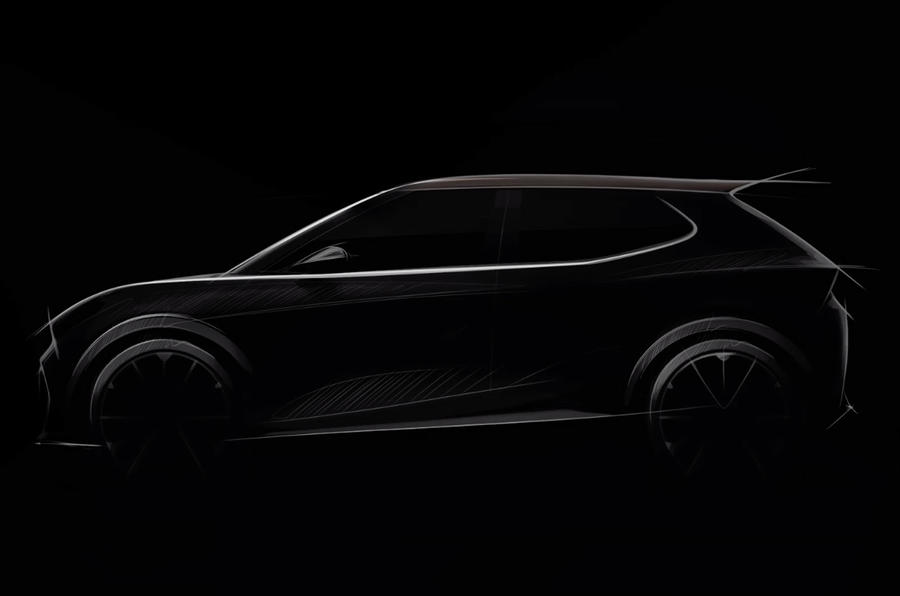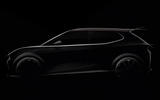Seat will launch an entry-level urban electric vehicle with the "dimensions of today's Arona" and a price of £17,000-£21,000 in 2025.
The new machine will be based on the modified ‘MEB-Lite’ platform for compact vehicles that will also underpin Volkswagen ID 1 and ID 2 models launched by that date. Notably, Seat has now again been given responsibility to lead the development of that platform for the whole Volkswagen Group.
Seat boss Wayne Griffiths first announced the plan to launch a compact EV last month, although at that date indicated that the model would carry the branding of sister firm Cupra. He has now said: "We've not yet announced which brand the urban electric vehicle will be", adding that the feasibility of a Seat-badged EV "will depend on when the battery prices come down and become suitable for the mass segment".
A Seat variant would tie in with the entry-level target price for the car, with Seat targeted at affordable motoring, while Cupra is pitched as a ‘premium performance’ brand attracting higher prices.
Griffiths said previously the compact EV would be "more than a car for us; it's the future of the car industry in Spain".
Seat and Cupra, he said, "will help make electric cars available to the masses with an urban, small electric car - and that's a project we're working on with [parent company] the Volkswagen Group".
The new model will sit in the A0 segment, below the upcoming El-Born electric hot hatchback, but have crossover-style proportions, meaning it will be comparable in size to the Seat Arona and Volkswagen Volkswagen T-Cross.
"This segment is huge in Europe and is going to change to electric cars, and this is the most difficult one to do it on," said Griffiths last month. "Doing it with cars like the Porsche Taycan at the top end of the market is a bit easier, but doing it with small cars, to make money is a challenge."
Potential designs have been completed, and the new model will likely be officially previewed later this year, should talks with the Volkswagen Group and Spanish authorities be sufficiently advanced. "We need to be ready by 2025", Griffiths said, "so the decisions need to be made this year."
He voiced a commitment to the new car's affordability, suggesting that 'synergies' within the Volkswagen Group and beyond would be key to keeping development costs - and thus final prices - down.
That means the Seat model will offer a maximum battery size of 45kWh and could be priced from around £17,800, if it follows the pricing strategy of its German sibling.














Join the debate
Add your comment
I still dont beleive VW/SEAT/Skoda will have Polo/Arona sized EVs on sale for £17k. Will be delighted if I'm wrong when the base Arona is £17,400 it seems very unlikely.
If it turns out that they are putting a poverty spec EV on sale that would be a good move, all EV prices are kept high, or at least partially justufued by, only selling with a high spec.
Maybe entry EV, but certainly not an entry-level price.
Spring might be cheaper but it achieved 0 stars in NCAP testing so do you really want to put your loved ones in it?
The Dacia Spring hasn't been NCAP tested yet. That's complete misinformation.
The Dacia Spring is a Renault Kwid, which achieved 0 stars in NCAP testing. You can change the name of the car, but you can't hide from the result.
This is where organisations like EuroNCAP should act to protect the consumer by testing the car.
In the meantime people should be aware of what they're getting in to.
The two may be based on the same platform but that's where the similarities end. EuroNCAP will test the Dacia Spring just before it goes on sale. I'm looking forward to the results.
You're kidding. Put the 2 cars side by side and play spot the difference. You might be able to find 5 changes, and that includes all the badges.
They may have similar proportions but one is an ICE vehicle built for India and South America and the other is an entry-level EV for Europe. EuroNCAP will crash test the vehicle and it will score well, no matter how much you want it to fail.
'similar proportions' - get yourself down to Specsavers, it's the same car. Granted the Dacia doesn't have Renault badges and now has batteries (which will add weight and make safety even more doubtful). The Kwid is a death trap, I can't see the Spring being any better.
When is the EuroNCAP test and how many stars do you predict?
The latest Global NCAP rating is 2 stars and it was noted that the Brazilian version had more reinforcement in the crash structure. The zero star tests in India were for the model without airbags. Cars are manufactured to meet the local/regional requirements. Renault / Dacia will further modify the car to meet the EU and UNECE requirements. Until India and South American countries increase their safety legislation or those buying the cars demand the latest safety features then most cars accesible to the majority of the population in those areas will be built down to a price.
Just one question. What's the point of an NCAP score for cars not sold in Europe? If that car went on sale in Europe it would cost at least double the price to bring it up to our min. requirements. To the best of my knowledge no new car being sold in Europe is a death trap. Stop scaremongering on something you clearly have no knowledge of. A good start may be to read up on how NCAP test and rate cars.
For all you Harping on, as usual, you fail to understand how it all works, if a car company here in the EU is for sale, it LEGALLY has to meet certain standards of security and safety, thats the LAW, India does not have these same legal regulations, plus, the company would never put a car on sale in Europe that would fail the NCAP, that would be suicide for any company to put a brand new car on sale that would be a headline car, so please, stop whining on, you clearly have no idea, and just wait, you do not work for NCAP or Dacia/Renault, so you do not have a clue what they have done to the car to make it better, so until then SHUSH
More of the usual utterly confused product planning from SEAT/VW. Surely this would be a SEAT model rather than a 'CUPRA' model? Cupra is supposed to be a performance brand which is going to struggle to gain any relevance or recognition at the best of times, without confusing what the 'brand' stands for so early on in it's existence as a stand alone range. This is exactly what VAG did with SEAT years ago- claiming that it would become an Alfa Romeo competitor before making every model in the range an amorphous blob MPV hatch. Baffling. Now they're going to do the same with Cupra.